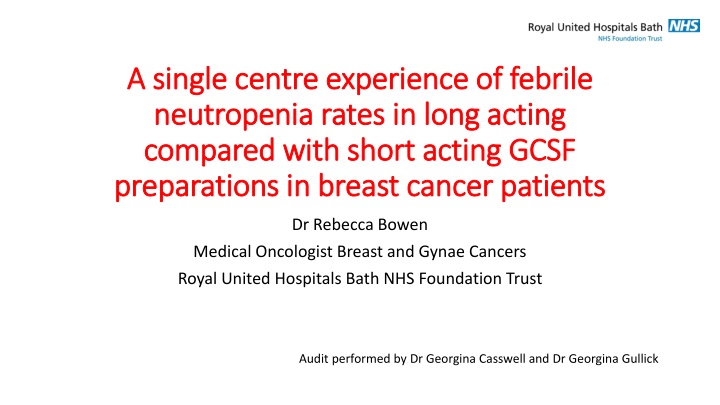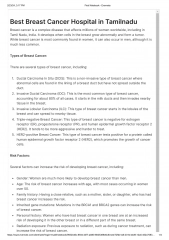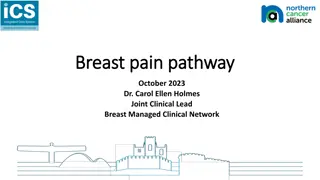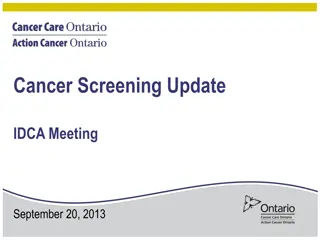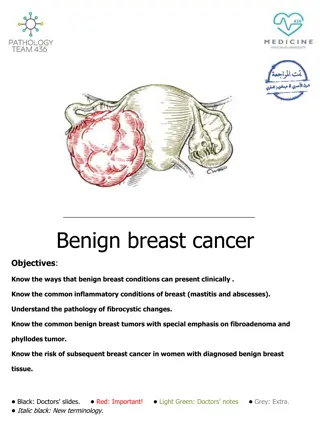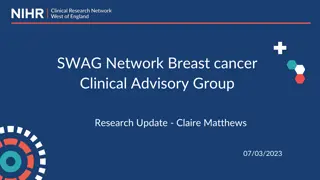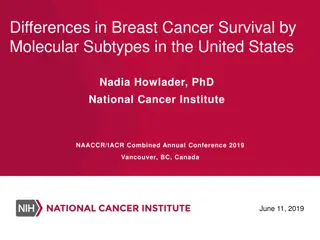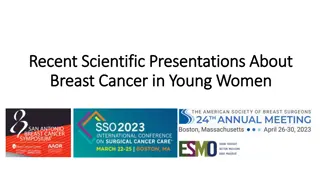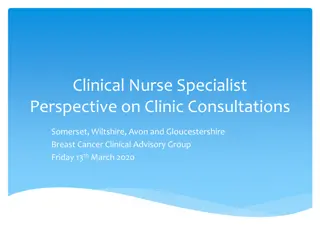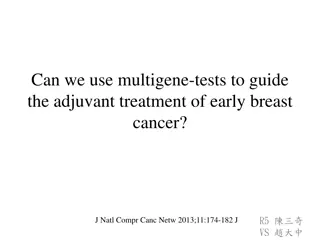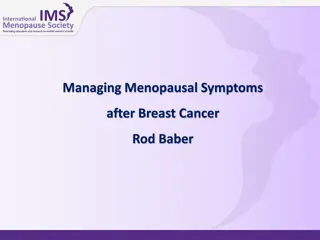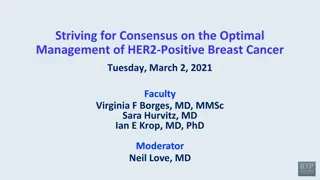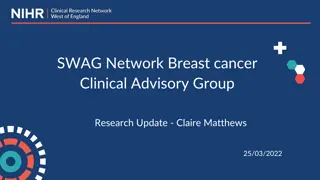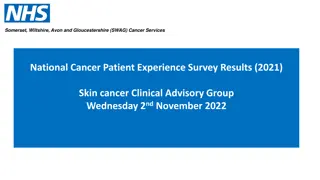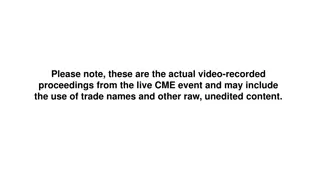Febrile Neutropenia Rates in Breast Cancer Patients: Long vs. Short Acting GCSF
This study compares febrile neutropenia rates in breast cancer patients using long-acting versus short-acting GCSF, highlighting the impact on hospital admissions and treatment outcomes. The findings indicate a significant difference in hospital admission rates between the two GCSF preparations, emphasizing the importance of prophylactic strategies in preventing complications during chemotherapy.
Download Presentation

Please find below an Image/Link to download the presentation.
The content on the website is provided AS IS for your information and personal use only. It may not be sold, licensed, or shared on other websites without obtaining consent from the author.If you encounter any issues during the download, it is possible that the publisher has removed the file from their server.
You are allowed to download the files provided on this website for personal or commercial use, subject to the condition that they are used lawfully. All files are the property of their respective owners.
The content on the website is provided AS IS for your information and personal use only. It may not be sold, licensed, or shared on other websites without obtaining consent from the author.
E N D
Presentation Transcript
A single centre experience of febrile A single centre experience of febrile neutropenia rates in long acting neutropenia rates in long acting compared with short acting GCSF compared with short acting GCSF preparations in breast cancer patients preparations in breast cancer patients Dr Rebecca Bowen Medical Oncologist Breast and Gynae Cancers Royal United Hospitals Bath NHS Foundation Trust Audit performed by Dr Georgina Casswell and Dr Georgina Gullick
Background Primary GCSF is used in breast cancer chemotherapy regimens to reduce rates of febrile neutropenia Febrile neutropenia results in dose reductions, delays, hospital admissions and death. GCSF stimulates the function of mature neutrophils and helps prevent neutropenia Short acting GCSF (SA-GCSF) (short elimination half-life) requires daily sc injections on day 5 to 9 following each cycle (cheaper drug) Long acting GCSF (LA-GCSF) requires only a single sc administration on day 2 of each cycle
Background Recent recommendations made by NHS England not to routinely commission LA-GCSF brands aimed to make pharmaceutical cost-saving as SA-GCSF is thought to be non- inferior in efficacy RUH switched from LA to SA-GCSF March 2017 This retrospective single-centered cohort study reports the rate of FN and resulting hospital admission with LA-GCSF and SA- GCSF prophylaxis
Aim A retrospective single-centered cohort study to report the rate of FN and resulting hospital admission with LA-GCSF and SA-GCSF prophylaxis and ensure non-inferiority for safety
Methods All breast cancer patients who commenced neoadjuvant or adjuvant chemotherapy with primary prophylactic GCSF between April 2014 and March 2018 were included All episodes of grade 3 or 4 neutropenia (neutrophils <1.0 x109/L) were identified Information about management was collected
Results 343 breast patients were included 260 received LA-GCSF 83 received SA-GCSF A significantly greater proportion of patients required hospital admission for FN with SA-GCSF compared to LA-GCSF; 22.9% (19/83) vs. 10.8% (28/260) (HR 2.13, 95% CI 0.2816 0.8001; p=0.0052)
Results Average length of stay was significantly higher with SA-GCSF compared with LA-GCSF; 5.4 days [100 days; 19 patients, ranging 1-15 days] vs. 3.3 days [93 days; 28 patients, ranging 1-10 days] (95% CI 0.1176 - 3.766; p= 0.0375) Subsequent reduction in chemotherapy dose density was significantly greater with SA-GCSF compared with LA-GCSF; 18.1% (16/83) vs. 9.6% (25/260) (HR 1.88, 95% CI 1.039 3.332; p = 0.0366)
Conclusions This single-center experience of SA-GCSF demonstrates a significant increase in FN admissions, inpatient stay and risk to dose density when compared to LA-GCSF Local agreement to consider switch to LA-GCSF in those patients failing SA-GCSF
